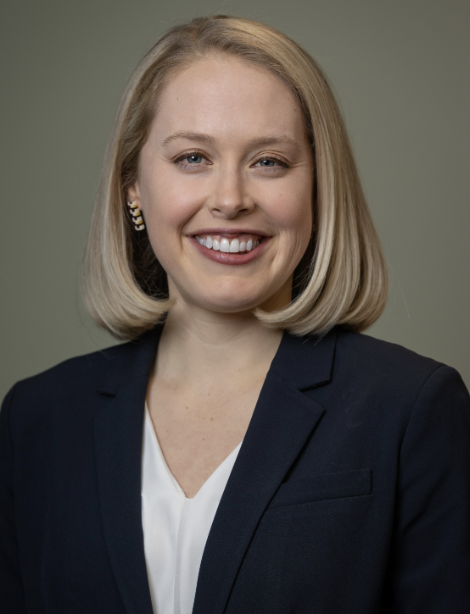Why did you choose the University of Michigan for your pediatrics residency? Can you explain the process?

Pediatrics Chief Resident
After completing medical school, those who are interested in specialized training will begin interviewing for residency programs. You interview at multiple places and create a personalized rank list. Simultaneously, the programs rank their applicants. The lists are then fed into a computer system that determines the final match.
I interviewed at several institutions but felt the most at “home” with Michigan. I also felt that U-M was a great fit for me academically. U-M has a strong cardiology program, which is of special interest to me. Along with being a great fit academically, I saw the importance of wellness throughout the program and how it’s incorporated into our workflow.
We are also extremely integrated with the undergrad and graduate campuses. Being involved with other communities really makes you feel like you’re part of something bigger than yourself.
In addition to the positive academic and research qualities, I remember during the interview we had dark chocolate Michigan cherries. This was something I look back on fondly as it added a special Michigan flair while visiting. I was so happy when I received my email that I had matched at U-M!
How do you become a Chief Resident, and what does the position entail?
In Pediatrics, becoming Chief Resident happens after you’ve completed your third year of residency. During your second year, you are nominated and interviewed for the role. Once you accept, you will begin as Chief Resident after you complete your residency.
I think of my job as chief resident in three roles: teacher, administrator, and mentor. You get an opportunity to teach our medical students, organize conferences, and give lectures. Each chief is responsible for scheduling an area in the hospital. For example, I am in charge of scheduling in the emergency department and the newborn nursery. I also run the orientation for those areas and serve as a liaison between the residents and the administration.
You also get to serve on committees as a Chief Resident. A few of the committees I’m on include: Medical Student Advisory, House Officer Quality and Safety, Mott Quality and Safety, Medication Safety, and Interdisciplinary Communication. It’s a great opportunity for me to listen in and learn what happens at the highest administrative levels within a hospital.
Lastly, a Chief Resident serves as a mentor. I love this part of the job! I get to see our interns (first year residents) learn and grow from day one of orientation. I check in with them throughout the year and get to see them progress into awesome physicians. I also meet regularly with senior residents to help them be their best selves inside and outside the hospital.
Can you share a memorable experience or significant learning moment during your time as a resident?
The first experience that comes to mind is on my first day of residency. I had previously come from a smaller program with a hospital muchsmaller than Mott. On the first day, I saw a patient who had a condition that I’d never heard of and thought to myself, wow, I have so much more to learn!
The attending on the case shared that this condition is extremely rare, a one-in-a-million disease. What stood out to me the most was that even though I felt like I had a lot to learn, I still felt like an important member of the team. The attending was so willing to teach me. This set the stage for how Michigan values learning and education. Michigan wants to bring the residents along for the ride to help them become the best physicians and people they can be!
Another example is my time during my rotation with the Pediatric Cardiothoracic Intensive Care Unit (PTCU). The level of complexity and thought that goes into the care of these young patients before and after surgery was truly amazing.
During this rotation, an attending took the time to ask what I found important. I expressed an interest in combining my interests in cardiology with the community and teaching. He was generous enough to connect me with community members and I now work with a group that helps prevent sudden cardiac deaths in Michigan. This was a great example of how the University of Michigan was so willing to teach me and make me the best person and physician I can be. These experiences in the PCTU inspired me to go into Cardiology after residency.
What advice would you give to the next person in this role?
As a resident, you will see things that are incredibly joyous and wonderful, but you’ll also see things that are sad and hard to process.
My advice is to work hard and immerse yourself in your training, but to hang on to something that makes you “you” outside of medicine. For example, I love working out and playing volleyball, so I learned to rock climb and joined a volleyball team in Ann Arbor. This gave me a wonderful community of people outside of medicine!
What is your plan after residency?
I recently finished the interview cycle for pediatric cardiology fellowships and matched at Texas Children’s Hospital/ Baylor University in Houston, Texas! I will spend the next three years training at Texas Children’s Hospital as a board-certified pediatrician learning more about pediatric cardiology. I plan to continue being involved in research, medical student education, and community advocacy as a fellow.
When you’re not working, what do you enjoy doing?
I enjoy staying active and pushing myself to learn new skills! Despite being a busy resident, I’ve picked up rock climbing, adopted a dog (Dolly), joined book clubs, and just signed up for a community improv class! I also enjoy exploring all that Michigan has to offer as someone from Arizona!



